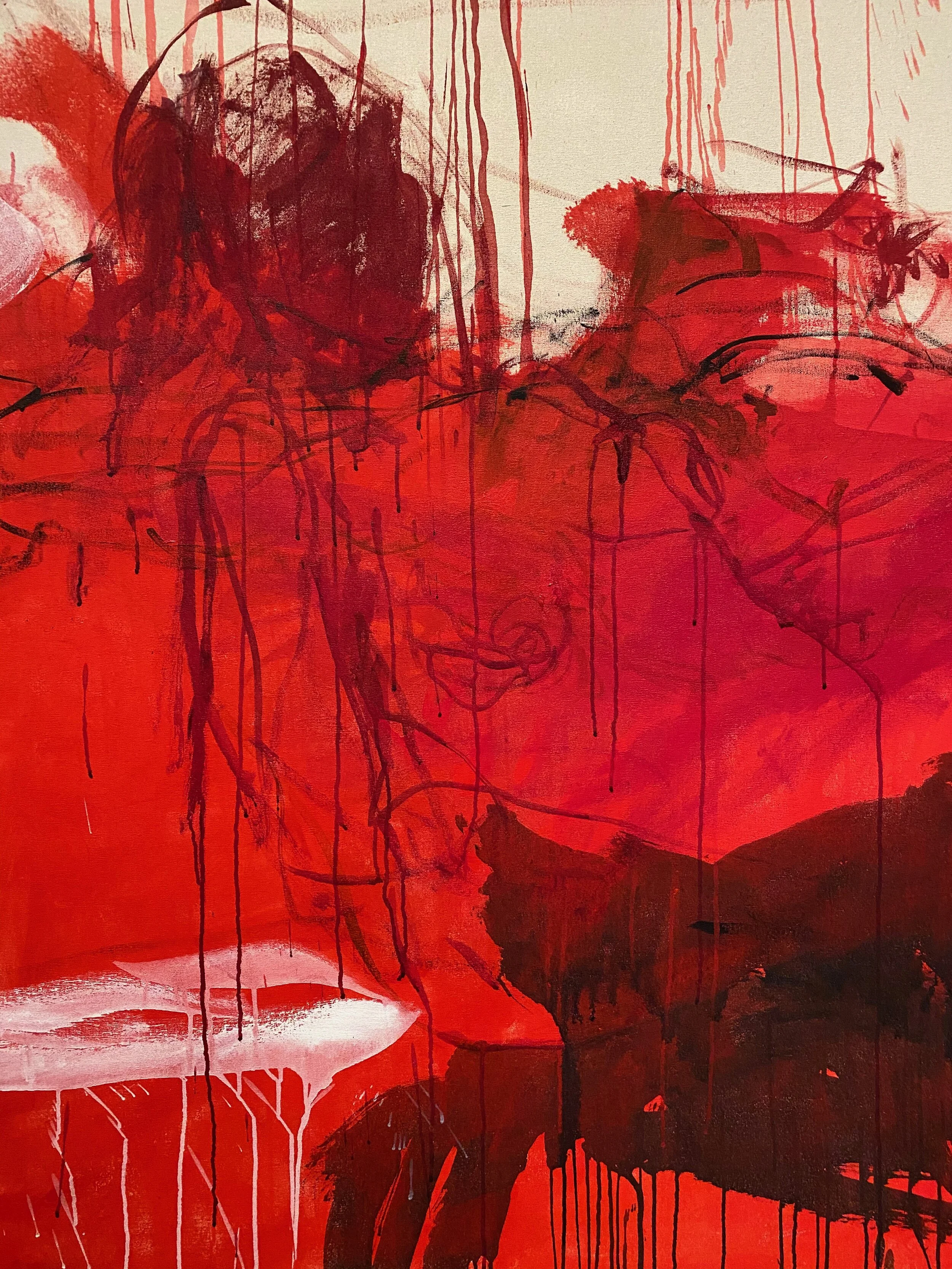Munch Revisited: A Post-Mortem of RA Exhibition & Highlights at Sotheby’s Modern Renaissance Sale
The Loneliness of the soul, an intimate three-room exhibition at the Royal Academy is abandoned. Empty. Void. Since the UK November lockdown not a soul has walked through the gallery chambers. The only occupants at the moment are the works of the two artists, 100 years apart, yet so similar in their shared expression of isolation, misunderstood artists of their time.
What links these two artists is their emotional approach to making art, painting vulnerable depictions of the human body and disturbing expressions of their inner turmoil. The emphasis placed on the self-portrait as a genre feels more relevant than ever during a pandemic, with an increased self-awareness and time spent in solitude mulling over one’s anxieties. Emin has curated a selection of some of Munch’s most uncomfortable portraits of the female body. These young girls are placed awkwardly within interiors that barely contain them with oppressive colours that suffocate the space. The unidentified girls are pictured weeping, holding themselves in vulnerable and foetal positions. Paired with Emin’s own portraits of disfigured reclining nude figures swimming in pools of red paint, the exhibition is a blood bath of female suffering. Emin’s titles attack an ambiguous, “You”, (e.g. “You made me Feel like This") while Munch’s titles used singular actions or emotions such as “Consolation” or “Jealousy” to address the narrative. The intended recipient to Emin’s titles are often ambiguous, but one can speculate that they may target more than just an individual. Perhaps the titles indicate layers of events and people who caused her pain? Or even herself - her own body fighting against her, with an aggressive cancer that recently caused unbearable agony to her reproductive organs.
Tracy Emin in a recent interview with Sotheby’s auctioneer, Oliver Barker, describes why she empathises with Edvard Munch, an artist who she thinks was perceived by some “a bit of a joke”, much like herself she feels. While Barker conceals any indication that he might agree with Emin’s self-reflection, one wonders if he too did not see the potential value in her art until recently.
The Sotheby’s interview with Emin emerges with the arrival of two of Munch’s work in the upcoming auction later this month, Modern Renaissance: A Cross-Category Sale, 25th March 2021. This 50 lot auction features a seemingly random cross section of artists spanning the course of 500 years. The selection ranges from Renaissance artist, Piero del Pollaiuolo, to early 20th century artists, such as Degas and Picasso, to Abstract Expressionists, Arshile Gorky and Cy Twombly, to Modern & Contemporary living artists such as Hockney, Hirst, and Banksy. Bizarre. The sale is tied together with a sweeping statement that groups “artists from throughout history who have brought about cultural change and renewal; forging new creative paths into the modern world.” The lot order doesn’t respond to date chronology, nor estimate price - perhaps it is grouped by subject? Nevertheless, this unconventional method of abandoning traditional categories is becoming increasingly popular. In May this year, Christies, in New York, will adopt this approach for the first time.
Although Sotheby’s auction highlights include two of Edvard Munch’s paintings: Self-Portrait with Palette (estimate £4,500,000 - £6,500,000) and Summer Day (estimate £9,000,000 - £12,000,000), personally it seems that the whole auction is in fact a highlight reel. Several non-highlights are “trending” artists like Hockney exhibiting at the RA in April, and Dubuffet with an upcoming exhibition at the Barbican in May. I can come to terms with the lack of order or chronology, because the artists on sale are hot right now. Sothebys is ahead of their game.
Edvard Munch, Summer Day
If I could get my hands on one Lot in this auction it would be Arshile Gorky’s Garden in Sochi, (estimate £2,200,000 - £2,800,000). Gorky was one of the first Abstract Expressionists I encountered as a teenager, romanticising his tragic tale of woe. He fled from persecution in his homeland Armenia, arriving in New York in 1920, where he became part of the most influential group of émigré artists of the period. Despite fleeing to another continent, the atrocities of the Armenian Genocide continued to haunt him up until he took his own life in 1948. His delicate and vibrant paintings depict the beauty of pain, combined with a radiant application of colour that at the same time oozes optimism. Garden at Sochi captures the tortured artist, the sickly yellow oils weep into other sections of colour, seeping and infecting the canvas. Gorky’s work is hard to come by, scarce as a result of his short life, and from this series of 11 paintings, five are in major museum collections. If you are the successful bidder on this work, my advice would be to place it in a dark room where you can weep in private.
Arshile Gorky, Garden at Sochi






